The top 10 undercovered stories of 2016
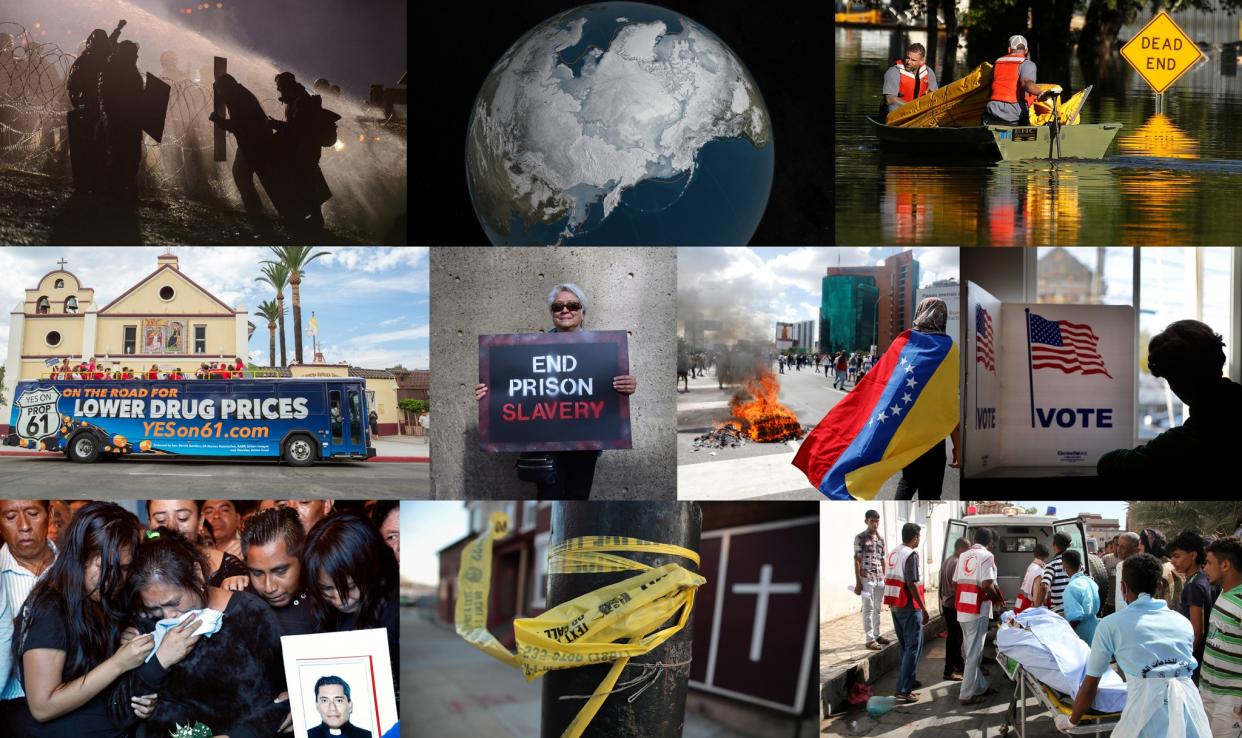
Big stories dominated the news in 2016 like no other year. Donald Trump ran for president of the United States — and won. The United Kingdom backed the Brexit campaign to leave the European Union. Right-wing populism surged around the globe. The war in Syria ground on, coming to a brutal denouement in the Russian-backed government’s retaking of Aleppo. ISIS-inspired attacks in Nice and Berlin used a chilling new weapon, the big truck driven straight into crowds of civilians. Major culture-shaping celebrities like David Bowie, Prince and Carrie Fisher died. The prescription opioid and heroin abuse epidemics ravaged small towns in the heartland. And the Black Lives Matter movement demanded reforms while continuing to decry police shootings and suspicious jailhouse deaths.
Many other stories received less attention, and as the year drew to a close, we wanted to highlight some of them. In America, we found that many of these stories had in common that they took place at the state level, or in parts of the country that are far, far away from major media centers. There were dozens of foreign stories that got little attention in America too; we’ve chosen to highlight only a handful. Below, some stories you may have missed.
_____
Flooding in the American South
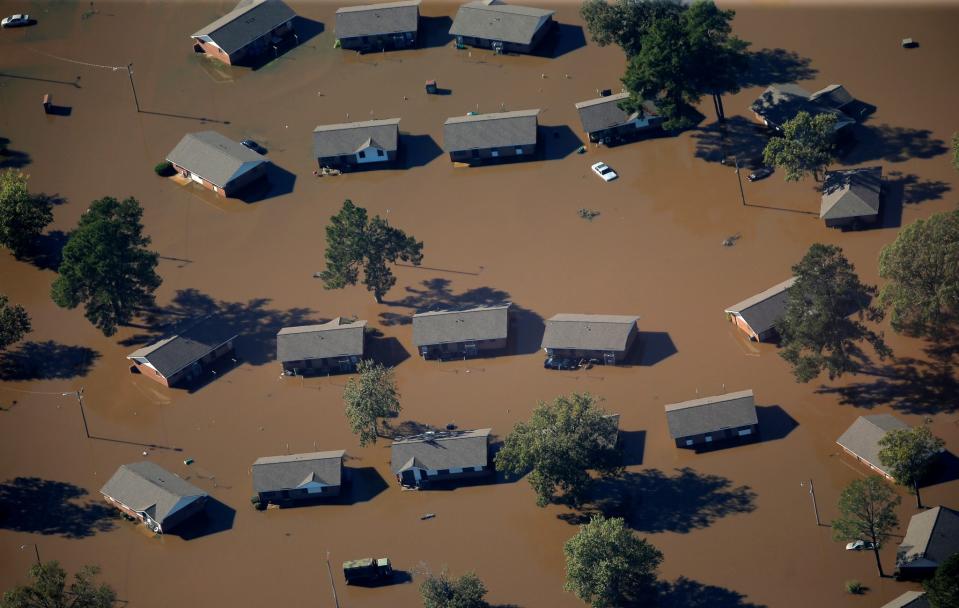
It was a disaster that unfolded under a clear blue sky.
In early October, days after Hurricane Matthew roared to life in the western Atlantic, the storm took deadly aim at the southeastern United States, battering the coasts of Florida, Georgia, South Carolina, North Carolina and Virginia with destructive winds and storm surges. North Carolina officials thought they had dodged a bullet from Matthew, which had weakened as it moved ashore. But days later, well after the public spotlight had moved on, the rivers far inland began to swell, sending historic floods through towns nowhere near the coast and causing an estimated $2 billion in damage.
Among the hardest hit: Princeville, N.C., one of the oldest towns incorporated by African-Americans in the U.S. Established in 1885, its founders were freed slaves. It wasn’t the first time Princeville had been underwater. In 1999, the town was nearly destroyed by rains from Hurricane Floyd, but residents, determined to preserve the town’s history, opted to rebuild, fortifying the city with dikes they believed would protect them from another once-in-lifetime flood. But with their homes washed away again, many there now aren’t so sure they should return.
It’s the same dilemma faced by many residents in central Louisiana, where nearly 30 inches of rain poured down in a little over a week in mid-August, resulting in historic flooding in Baton Rouge and other nearby parishes. The storm, which was likened to a slow-moving Hurricane Katrina, killed 13 people and destroyed or damaged nearly 150,000 homes — devastation on par with Hurricane Sandy, which ravaged the East Coast in 2012. The flooding caused an estimated $8 billion in damage — complicated by the fact that an estimated 80 percent of damaged homes weren’t covered by flood insurance because they were located in a floodplain. In a state dominated by low-lying areas, that has revived a debate dating back to post-Katrina recovery about flood protections and whether people should live in areas prone to flooding. — Holly Bailey
The largest Native American intertribal gathering in more than a century
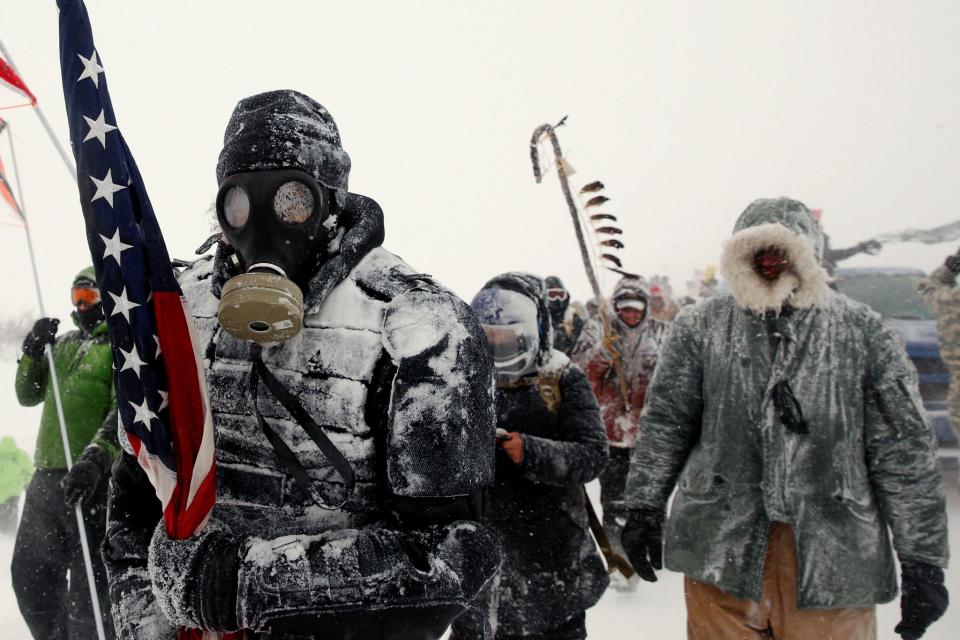
When the first real wave of journalists finally arrived at the protest near the Standing Rock Reservation in North Dakota in September, they were greeted by protesters wondering what took them so long.
The camp itself had been in existence since April, when Energy Transfer Partners received approval for a 1,172-mile pipeline from North Dakota to Illinois, aiming to carry half a billion gallons of light sweet crude a day and costing $3.8 billion to build.
The company, based in Texas, said the pipeline would create up to 12,000 jobs, but members of the Sioux tribe on the adjacent Standing Rock Reservation saw the project as a threat to their water supply and sacred burial lands. In protest, 200 tribal members on horseback set up the nucleus of a camp adjacent to their reservation, and a short walk down the highway from the proposed path of the Dakota Access pipeline, or DAPL.
A court battle raged during the summer, with the tribe petitioning first for a more thorough environmental impact study, and then an emergency injunction to halt construction. With each step the protest camp grew. By August it would become the largest intertribal gathering of Native Americans in more than a century — a “village” of up to 3,000 determined protesters, with its own school, security patrols, communal dining tents and prayer circles. There was even a press tent, with badges for the expected rush of reporters.
But neither the size of the gathering nor its historic nature caught the attention of the national press. Periodically the hashtag #NoDAPL would trend. A few journalists from environmental and progressive publications made the one-hour drive from Bismarck.
Only when things got violent, though, did real attention come. Labor Day weekend, as bulldozers began to clear land for the pipeline, protesters marched to stop them. Private security forces responded with attack dogs and mace. Videos of the conflict went viral, and a rush of network cameras (along with celebrity protesters from Susan Sarandon to Jill Stein) descended on the state. By the end of that week, the Obama administration ordered a temporary construction halt for more environmental review. The cameras left again, just as the brutal North Dakota winter arrived.
But the protest camp continued to grow. Around Thanksgiving, local law enforcement militarized its response, bringing in tanks and barricading the highway that led to the camp. In clashes between protesters and law enforcement, officers allegedly used concussion grenades and, in the subfreezing weather, water cannons. One protester from New York nearly lost her arm, and the rate of arrests increased, with the total nearing 500.
The national press returned.
On Dec. 4, a group of 2,000 U.S. military veterans arrived to relieve some of the protesters who had been living in tents for months. The next day the U.S. Army Corp of Engineers officially denied an easement necessary for the pipeline to proceed, effectively stopping the project. At least for now. — Lisa Belkin
A nationwide prisoner revolt
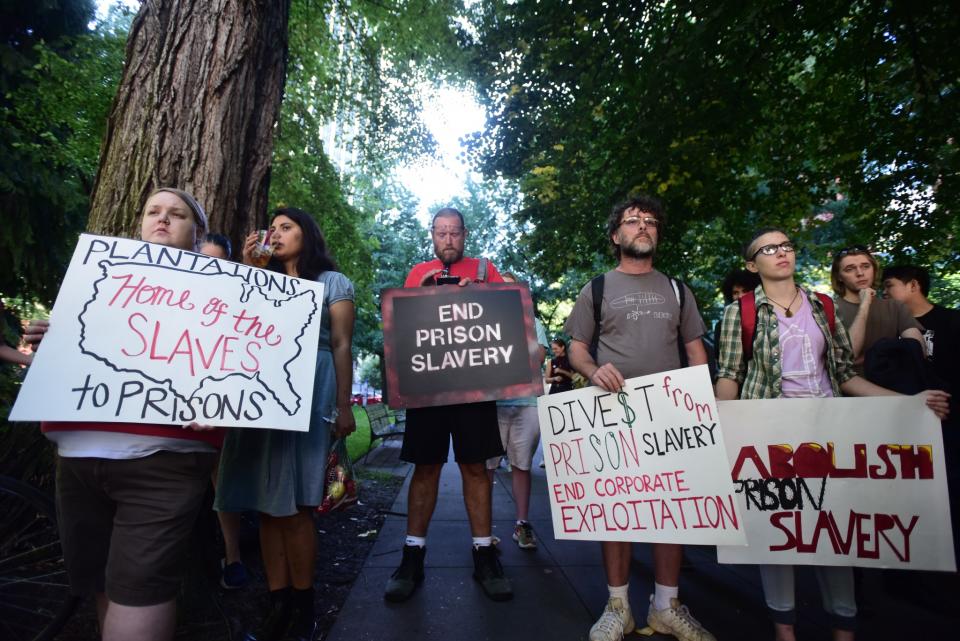
While political unrest around the globe made headlines this year, a quieter rebellion was taking place behind bars in America’s mammoth criminal justice system.
Thousands of prisoners from Ohio to Florida staged a series of strikes and protests in 2016, demanding wages for their labor and better living conditions. Striking prisoners called themselves the “slaves of today” and argued that the use of their free labor was contributing to unemployment in the civilian population. The September protests marked the 45th anniversary of the Attica prison riot in New York, when inmates took over the New York facility to demand more rights after an inmate was killed. The Attica riot left 33 inmates and 10 prison employees dead, and this year’s prison strikes also at times turned into rioting, as when 400 inmates revolted in the Holmes Correctional prison in Florida’s Panhandle in September, damaging their dorms. In Alabama in March, inmates stabbed the warden and a prison guard before setting a part of the prison on fire. The protests and riots mark a fairly recent uptick in prison unrest — for years, prison officials successfully used solitary confinement to keep politically active inmates away from the general population. The strikes did not make many headlines, and prisoners didn’t win significant reforms.
Since 1970, around the time of the Attica protest, the U.S. prison population has grown from just 200,000 inmates to more than 2 million.
The Selma filmmaker Ava DuVernay released a documentary called “13th” this year arguing that private prisons and some corporations have profited off this ballooning prison population. DuVernay points out that this problem primarily affects black men — 1 in 3 of whom will have served some prison time in their lifetimes, compared with 1 in 17 white men.
Meanwhile, an effort to reform federal sentencing with the goal of having fewer people serving decadeslong sentences for nonviolent crimes stalled in the Senate, leading some advocates to conclude that criminal justice reform efforts are dead for now on the federal level. — Liz Goodwin
A major rollback of voting rights in 14 states
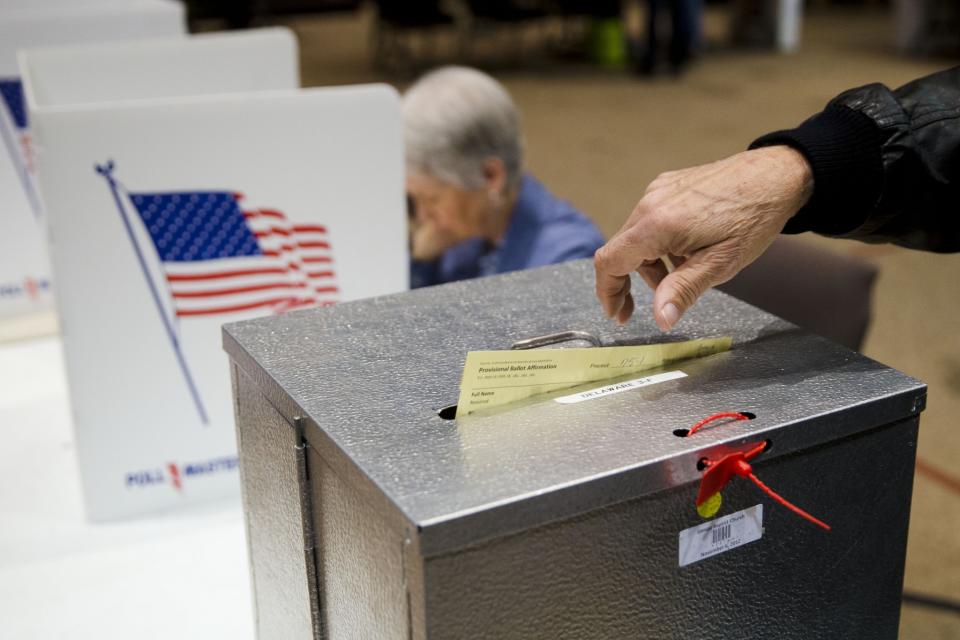
Amid the fireworks of the 2016 presidential campaign, recent successful state and local Republican efforts to make voting harder for millions of Americans drew little attention until after the votes had been cast.
That’s when it finally began to gain national notice that in 14 states, including Wisconsin and Virginia, the laws had been changed and voters had for the first time faced new restrictions at the polls ranging from voter ID laws to reduced early voting hours. Such measures in the past have led to lower turnout among poorer voters and minorities — which is to say, people who just happen to vote overwhelmingly Democratic.
In Wisconsin, hundreds of thousands of registered voters did not have a current photo ID, according to research by political scientist Ken Mayer, which made them ineligible to vote. The state saw its lowest turnout in two decades this election, which some blame on the law. In Ohio, early voting hours were reduced sharply from 2012, likely affecting Democratic turnout, since Democrats are more likely to vote early in person than Republicans in that state. This presidential election was also the first since the Supreme Court struck down a crucial part of the Voting Rights Act — a ruling that allowed Southern states to close down 868 polling places. Other states in addition to the 14, such as North Carolina, also attempted to restrict voting but were blocked by the courts. The new North Carolina voter ID law was struck down by a judge who said it targeted African-Americans with “surgical precision.” The law’s proponents argued it would reduce voter fraud, which election experts say is incredibly rare.
The voter restrictions do not appear to have cost Hillary Clinton the presidential election, given that she also lost in key states that had not recently enacted new laws, such as Michigan and Pennsylvania.
But that doesn’t mean the tightening of voting restrictions will come to an end. As soon as the election was over, several states sought to adopt other laws restricting voting. The Michigan House approved a strict voter ID law, but the state Senate adjourned before voting on the bill. And in North Carolina, the GOP-controlled Legislature moved quickly to strip the new Democratic governor of the power to appoint a majority of members to state and county boards of elections — a move that will ensure Republicans chair the boards during any major elections.— Liz Goodwin
The sharp spike in gun deaths — and nonlethal shootings — in Chicago
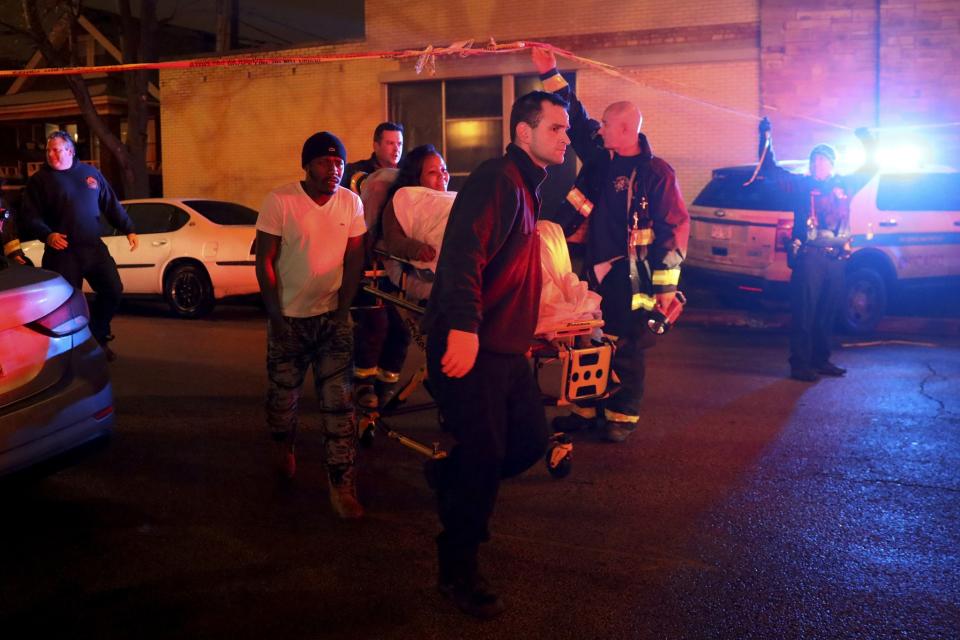
They were waiting for their father in a van outside a house on Christmas Day on Chicago’s South Side when two people walked up and sprayed the car with bullets. Inside, two teenage girls — just 13 and 14 — were shot and wounded in what police believe was a gang-related attack aimed at the father. A 2-year-old boy also in the car somehow escaped injury, but that was one of Chicago’s few Christmas miracles in what has been a horrifically violent year.
All told, more than 60 people were shot and 12 killed over the holiday weekend in Chicago, mostly on the city’s South Side. It was yet another violent few days in what has been one of the city’s bloodiest years on record. Chicago has been long stricken by gun violence, but in 2016 the homicide rate skyrocketed to shocking new levels, flummoxing police and earning the Midwestern city a mention in Donald Trump’s stump speech in which he declared the city to be “like a war zone.”
According to the Chicago Tribune, which keeps a meticulous count, more than 4,300 have been shot in the city so far this year, and roughly 770 people and counting have been killed. That’s a major increase over 2015, when there were 2,989 shooting victims and 492 homicides. Those statistics are worse than other cities like New York and Washington, which have taken their turn in the spotlight for being dangerous. Chicago’s gun violence has generated coverage, including a series last summer in the New York Times. But in South Side Chicago, where the echo of gunfire has become a daily way of life, residents scared to go outside at night feel they are living a tragedy that continues long after the cameras and reporters have gone away, one they feel Americans in other cities have overlooked or simply can’t comprehend.
Police have long looked to Chicago’s brutal winter to bring a pause in the shootings, but that hasn’t happened this year. Officials blamed the wave of Christmas violence on gang members targeting rivals at their homes and family holiday gatherings, and many worry there will be no reprieve before summer, when the violence is often at its worst. The never-ending question for weary residents and city officials is how to stop it, and no one has yet to find the answer. — Holly Bailey
Record-setting Arctic warmth causes giant loss of sea ice, snow
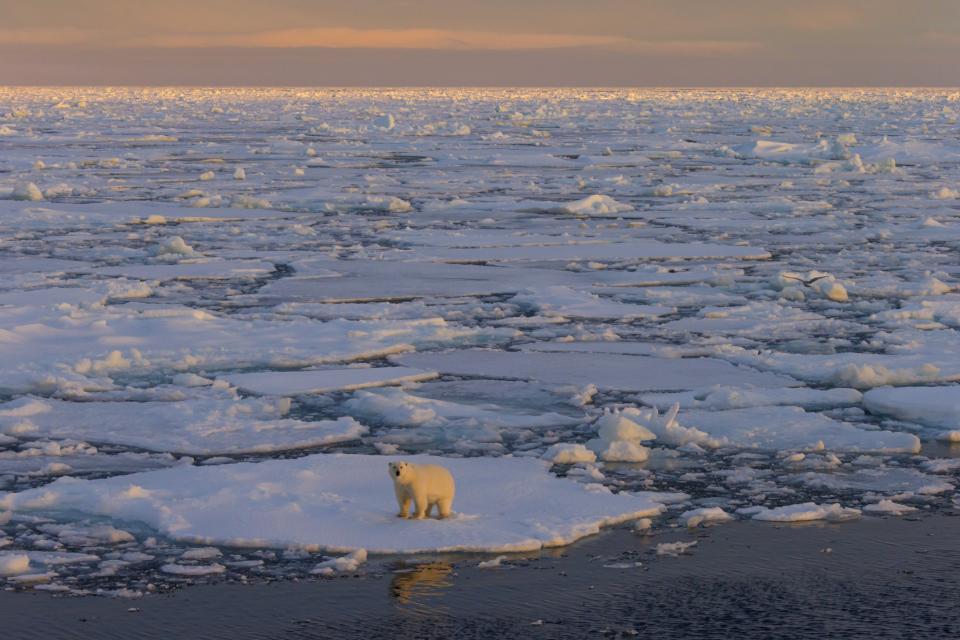
Unprecedented Arctic warmth in 2016 had a cascading effect throughout the polar region’s ecosystems, resulting in a record loss of sea ice and extensive melting of the Greenland Ice Sheet.
According to NOAA’s “Arctic Report Card,” a peer-reviewed project combining the work of 61 scientists from 11 countries, there were stronger signs in 2016 of persistent warming than in any other year on observational records, many dating back to 1900.
“The environment is undergoing a fundamental shift. 2016 was a year like we have never seen before in the Arctic,” Jeremy Mathis, director of NOAA’s Arctic Research Program, said in an interview with Yahoo News.
The Arctic is warming twice as quickly as the world average, sea ice reached its lowest level on record and snow cover dropped to its smallest since satellite observations began in 1967.
The Greenland Ice Sheet continued to lose mass, as it has every year since satellite-based measurements began in 2002. Scientists estimate the sea level would rise roughly 20 feet if the Greenland Ice Sheet were to melt, according to the National Snow & Ice Data Center.
Throughout 2016, NASA had repeatedly warned that the global climate was setting troubling records, and its scientists often wonder how to best communicate their findings to the general public.
“We struggle with that every day,” Mathis said. “People oftentimes forget that the U.S. is an Arctic nation. We have interests to consider in the Arctic, both from a commercial development standpoint as well as supporting our residents who live up in Alaska and occupy large parts of the Arctic space.”
On Dec. 20, President Obama announced that he was calling for a ban on offshore oil and gas drilling in areas of the Arctic and Atlantic Oceans — a move that could preserve the land but won’t stop the warming. — Michael Walsh
The power of the pharmaceutical industry at the state level
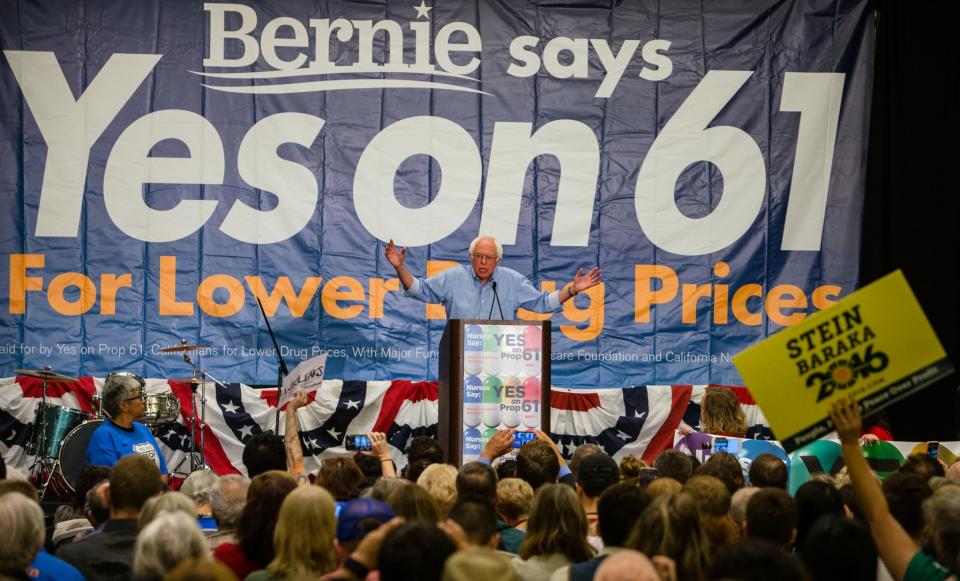
The United States pays more for prescription drugs than any other world power, and in 2016 the pharmaceutical industry demonstrated its continuing might in keeping prices high here. Some of the most significant battles played out under the radar at the state level.
In California, for example, Proposition 61 proposed mandating that state agencies pay no more than the Department of Veterans Affairs for prescription drugs. The DVA is permitted to negotiate lower drug prices, something most federal government agencies are barred from doing, due to the Medicare Part D legislation passed in 2003. Prop. 61 enjoyed early polling leads and won a strong advocate in Sen. Bernie Sanders, who became one of the faces for “yes” on the measure and penned op-eds citing its importance in the fight against high drug prices.
But after the pharmaceutical industry spent more than $120 million on ads urging Californians to vote no — compared with $19 million spent on yes — the measure ended up failing, 53 percent to 47 percent. The no campaign focused on the fact that the measure would help only certain Californians and could raise prices for veterans, and, according to a report from the Intercept, made donations to several advocacy groups who came out against Prop. 61.
In Colorado, Amendment 69 was a citizen-led attempt to establish universal health coverage in the state through a program called Colorado Care. The Colorado Democratic Party’s platform said it was a strong supporter of the measure, and it also earned the endorsement of Sanders. But the measure was defeated soundly at the ballot box, amid donations from the pharmaceutical industry reaching $4 million, four times the amount spent by those supporting the measure. Prominent Democrats in the state, like Gov. John Hickenlooper and Sen. Michael Bennet, also opposed the amendment, citing the high cost of the program.
The response from some drug companies to the opioid crisis has been to fight measures meant to curb the epidemic at the state level, begin promoting products to deal with side effects and shift to increasing the sale of drugs like OxyContin overseas. With high-profile battles like the one following the rise in EpiPen pricing certain to continue into 2017, Big Pharma is sure to continue to fight to defend its interests. — Chris Wilson
The war in Yemen
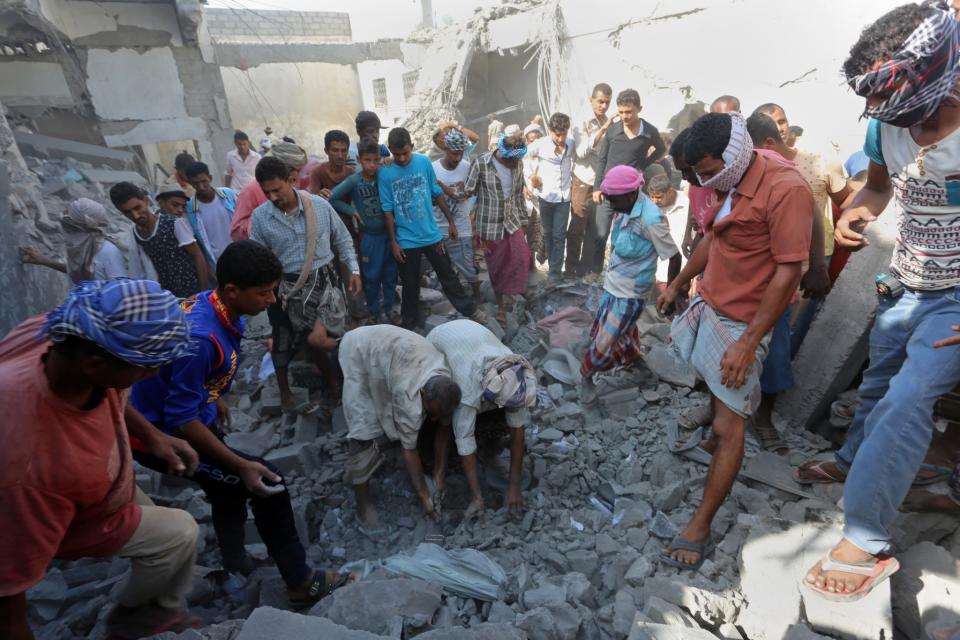
Just days before a terrorist rammed his truck into a Christmas market in Berlin, killing 12, a suicide bomber killed 52 Yemeni soldiers gathering to collect their pay near the port city of Aden. The Berlin attack generated worldwide headlines; the strike in Yemen — for which the Islamic State group quickly took responsibility — was barely noticed. In part, that’s because it was not that unusual.
The week before, another suicide bomber targeted a crowd of would-be Yemeni army recruits, killing 45. The two incidents were a painful reminder that impoverished Yemen remains one of the deadliest countries on the planet. It’s the site of a vicious civil war between rival factions backed, respectively, by Iran and Saudi Arabia, which has caused an estimated 10,000 casualties and displaced 2.5 million. At the same time, Islamic terror groups are exploiting the chaos with stepped-up attacks.
“Many people are literally starving across Yemen,” Baraa Shiban, a Yemeni human rights activist, wrote in an email to Yahoo News. “The situation on the ground simply means that whoever can carry a gun and control areas on the ground becomes the local authority.”
The conflict dates back to late 2014, when Shiite Houthi rebels, supported by Iran, seized Sanaa, the country’s capital, forcing its president, Ali Abdullah Saleh, to flee. Then Saudi Arabia (leading an Arab coalition) intervened to thwart its regional rival. The Saudis launched airstrikes that have hit hospitals, school buildings and markets, killing civilians. The U.S. has since cut off cluster bomb sales and munitions kits to the Saudis.
America continues to target terror operatives in Yemen with drone strikes (one such strike killed three al-Qaida operatives last week) but has otherwise disengaged. But that needs to change, says Shiban. The U.S. and the rest of the international community need to intervene; otherwise, he adds, the world will witness a slaughter “similar to Aleppo.” — Michael Isikoff
The economic crisis in Venezuela becomes a humanitarian emergency
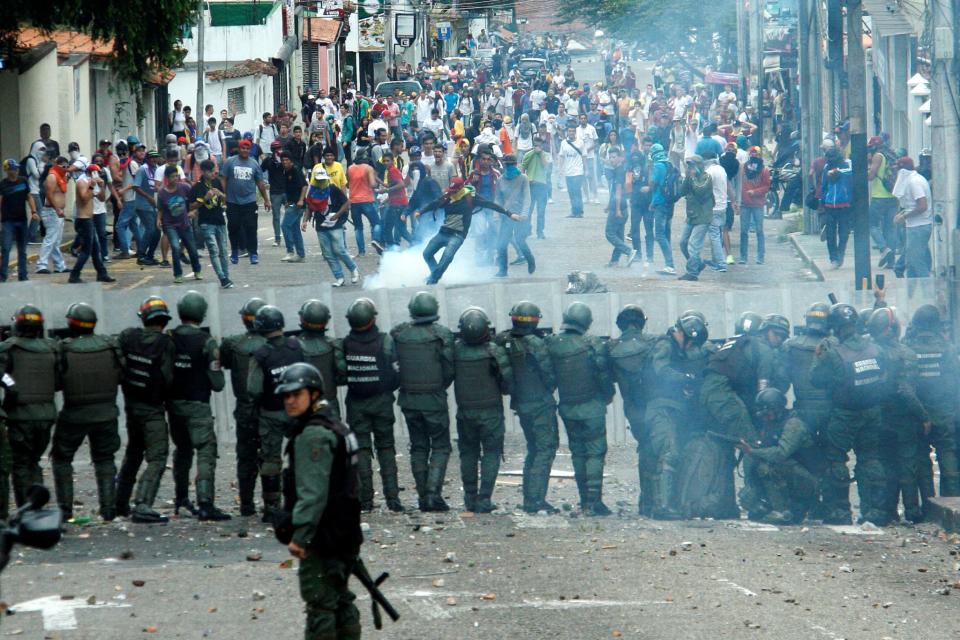
Falling crude prices have rocked the oil-rich country of Venezuela, which largely relies on revenue from oil production, helping send inflation soaring more than 700 percent in the past year. That’s left the socialist nation’s currency, the bolivar, so worthless that businesspeople have taken to weighing the vast stacks of bills required for each purchase rather than taking the time to count them.
The cash crunch has led to shortages of basic essentials like food, medicine and even toilet paper — with the food shortage so acute that the average Venezuelan now spends 35 hours waiting to buy food every month, according to the polling firm Datanalisis. The long lines and shortages have also fueled social unrest, with Venezuelans storming grocery stores and police retaliating with rubber bullets.
Nor are food riots the only violence plaguing the country. The Observatory of Venezuelan Violence released an analysis that concluded that the country saw 91.8 violent deaths per 100,000 residents in 2016. OVV’s figures have been questioned, but if they’re correct, it would give Venezuela the world’s second highest homicide rate, behind only Honduras.
In February, the Venezuelan government released its own statistics and admitted that about 58 people per 100,000 were slain — giving the South American country one of the world’s highest homicide rates.
According to the Los Angeles Times, many Venezuelans attribute the crime wave to the failing economy and crumbling government institutions. The paper also interviewed citizens who avoid going out after dark and say the streets are littered with human remains.
The situation has gotten so bad, growing numbers of young Venezuelan women are reportedly choosing to sterilize themselves. And Venezuela’s economic crisis could also have an impact beyond the country’s borders. Tens of thousands of people have begun fleeing the country, sparking worries that the situation in Venezuela could lead to a full-blown refugee crisis.
Worst of all, Venezuela’s woes show no sign of improving. The International Monetary Fund has forecast that the country’s inflation will pass 1,600 percent next year and increase to an astonishing 3,500 percent by 2019. — Hunter Walker
Cartel conflict pushes the homicide rate in Mexico up again
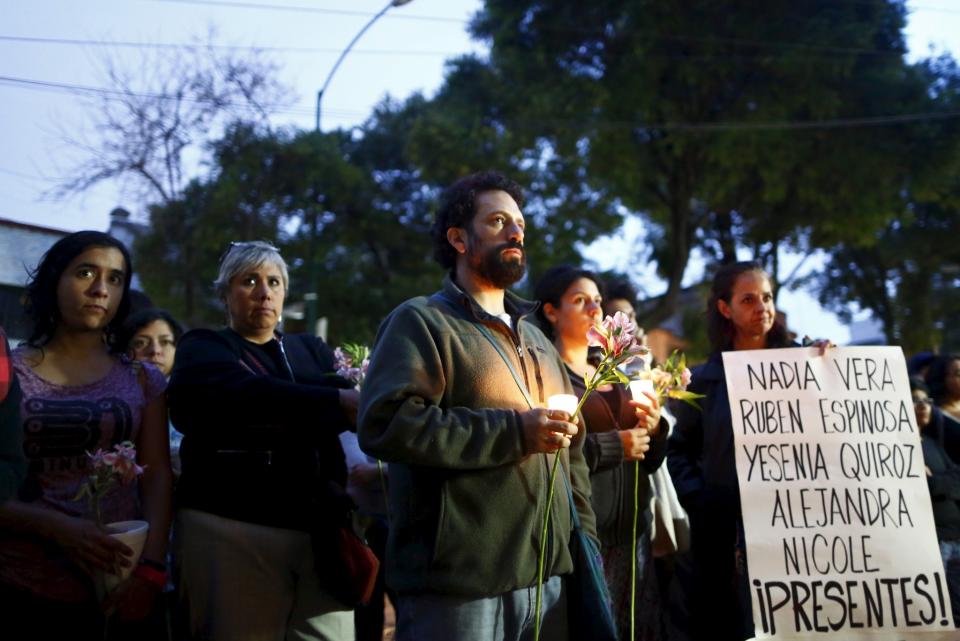
Thanks to Donald Trump’s campaign for the White House, much of the nation’s focus on Mexico in 2016 involved his assertions that the United States would build a wall on its southern border and force Mexico to pay for it, or impose tariffs or penalties to prevent American companies from relocating manufacturing facilities there.
What’s been covered less is something that’s worrying Mexicans more than American bombast directed at the minority of Mexicans who seek to enter El Norte without papers: The official homicide rate in Mexico is three times what it is in the United States — and in 2016, it grew dramatically, thanks in part to resurgent warfare between Mexico’s drug cartels.
The spike in killings comes even as extortion and kidnapping are down, according to government statistics in Mexico. Homicide in Mexico had been on the downswing since 2011, but the 15.4 percent increase in the first half of 2016 alone threatened to wipe out gains made since President Enrique Peña Nieto took office in December 2012. In August, 2,073 people were killed, the first time homicide took more than 2,000 lives in a month since August 2011. And those official numbers may even undercount the extent of the problem, according to experts.
Gang conflicts and turf battles between cartels are believed to have been behind many of the killings. In particular, conflict between the Sinaloa Cartel and the Jalisco New Generation and Beltrán Leyva Organization followed the recapture of Sinaloa kingpin Joaquin “El Chapo” Guzman on Jan. 8, which created a power vacuum. But the distribution of death across the country also showed an increase in areas not known as centers of drug war conflict, and different cartels contended for power in the northern part of the country.
The homicide rate in Mexico between 2005 and 2010 was high enough to lead to a drop in male life expectancy, according to research in Health Affairs. — Garance Franke-Ruta
_____
See more of our year-end related posts


